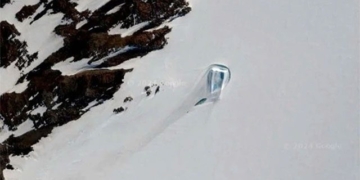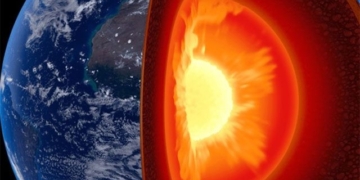Geologists have discovered that the rocks of the Barberton Greenstone Belt are similar to those that experience earthquakes and landslides in New Zealand.
Scientists have found evidence of some of the earliest known earthquakes within rocks that are 3.3 billion years old. These rocks provide early evidence of plate tectonics, explaining how the Earth’s crust is divided into large plates that glide over the mantle. The rocks also indicate the conditions that may have existed when life first developed.
This discovery was made by geologists after investigating the Barberton Greenstone Belt, a complex geological formation in southern Africa.

The Makhonjwa Mountains on the Barberton Greenstone Belt, where scientists found evidence of the earliest known earthquakes on Earth. (Photo: Beate Wolter).
According to a new study published in the journal Geology, the researchers realized that this belt closely resembles much younger rocks in New Zealand that have undergone submarine landslides due to earthquakes along the Hikurangi subduction zone.
The lead author, Simon Lamb, a geologist at Victoria University of Wellington in New Zealand, stated: “The energy released in these earthquakes is immense, shaking the entire region.”
The study indicates that the Barberton Greenstone, named for its green color, provides one of the most extensive geological records of the Earth from 3.2 billion to 3.6 billion years ago.
Co-author Cornel de Ronde, a senior scientist at GNS Science, a research institute in New Zealand, published part of the map of the belt in 2021, revealing a massive chaotic block that separated from where it formed.
Geologist Simon Lamb noted that the geology is similar to what he has observed along the eastern coast of New Zealand in 20-million-year-old rock formations and recent underwater landslides. Specifically, the Great Marlborough – remnants of a continental shelf that collapsed in underwater landslides – in the Hikurangi subduction zone closely resembles the Barberton Greenstone Belt, according to a statement from GNS Science.
Off the coast of New Zealand, the Pacific Plate is sliding beneath and rubbing against the Australian Plate, creating large earthquakes and underwater landslides. In these landslides, rocks formed on land and in shallow waters fall into the deep ocean, mixing their original positions.
The study suggests that this formation may be the result of thousands of earthquakes over millions of years, with each earthquake shifting the largest blocks. This is indeed a record of prolonged shaking over time, a phenomenon occurring on primordial Earth.
The Earth formed about 4.6 billion years ago and subsequently cooled to become a water world. According to the study, there is no scientific consensus on when plate tectonics began, likely occurring before 2 billion years ago. Scientists believe that there were earthquakes before those explained in the Barberton Greenstone Belt, coinciding with the origins of life.
Biologists are uncertain about where, when, and how life began on Earth, although the oldest fossils date back 3.7 billion years. They believe that subduction zones facilitated the emergence of life and allowed it to thrive. Life arose from extreme violence.


















































